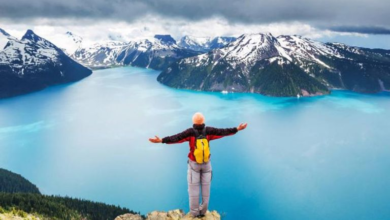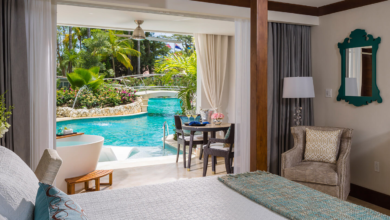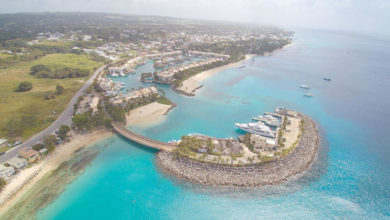Exploring the Enigmatic Beauty: Travel and Tourism in the Democratic Republic of the Congo

Exploring the Enigmatic Beauty: Travel and Tourism in the Democratic Republic of the Congo
Introduction:
The Democratic Republic of the Congo (DRC) is a land of extraordinary natural wonders, cultural diversity, and untamed wilderness. Despite its tumultuous history, the country is emerging as an enticing destination for adventurous travelers seeking unique experiences. From lush rainforests and endangered wildlife to vibrant cities and fascinating cultural heritage, the DRC offers a captivating journey into the heart of Africa. This featured article serves as a comprehensive tourist guide, unveiling the highlights and essential information for an unforgettable trip to the DRC.
- Kinshasa: The Vibrant Capital:
Start your exploration in Kinshasa, the sprawling capital city of the DRC. Immerse yourself in the bustling markets, lively music scenes, and vibrant street life. Visit the National Museum of Kinshasa and the Académie des Beaux-Arts to discover Congolese art, history, and culture. Enjoy the local cuisine at vibrant restaurants and experience the rhythmic beats of Congolese music in lively nightlife venues. - Virunga National Park: A Pristine Paradise:
Venture eastward to Virunga National Park, a UNESCO World Heritage site and one of Africa’s most biologically diverse reserves. This protected area is home to the critically endangered mountain gorillas, which can be observed during guided treks. Embark on thrilling hikes up Nyiragongo volcano to witness its mesmerizing lava lake at night. Explore the park’s other treasures, including chimpanzees, elephants, and a stunning array of bird species. - Majestic Waterfalls and Rivers:
The DRC is blessed with remarkable waterfalls and mighty rivers. Marvel at the powerful Inga Falls on the Congo River, one of the world’s largest waterfalls. Take a boat trip along the Congo River to appreciate its grandeur and witness the local fishermen casting their nets. Discover the scenic beauty of Zongo Falls, a hidden gem nestled within the equatorial rainforest, offering a refreshing retreat for nature enthusiasts. - Garamba National Park: Wildlife Haven:
Head north to Garamba National Park, a sanctuary for diverse wildlife. Embark on thrilling safaris to spot elephants, giraffes, buffalo, and various antelope species. Garamba is also home to the rare Kordofan giraffes, whose population is being carefully protected. Experience the park’s unique ecosystem and gain insights into conservation efforts aimed at preserving this precious natural heritage. - Cultural Encounters in Kisangani:
Journey to Kisangani, a historic city located on the banks of the Congo River. Explore the Wagenia fishing village, where skilled fishermen employ traditional methods to catch fish using intricate wooden traps. Visit the Stanley Falls, a series of rapids on the Congo River, and learn about the city’s rich colonial and cultural heritage, which has been shaped by its strategic location in Central Africa. - Practical Considerations and Safety:
When visiting the DRC, it is essential to stay informed about the current security situation and consult travel advisories. It is advisable to hire a local guide or join organized tours for a safe and enriching experience. Ensure you have the necessary vaccinations and travel insurance. Respect local customs and traditions, and be mindful of cultural sensitivities. It is also crucial to adhere to park regulations and guidelines when engaging in wildlife encounters or trekking activities.
Remember to plan your trip carefully, research local customs and regulations, and consider hiring local guides or joining organized tours to make the most of your travel experience in the DRC.
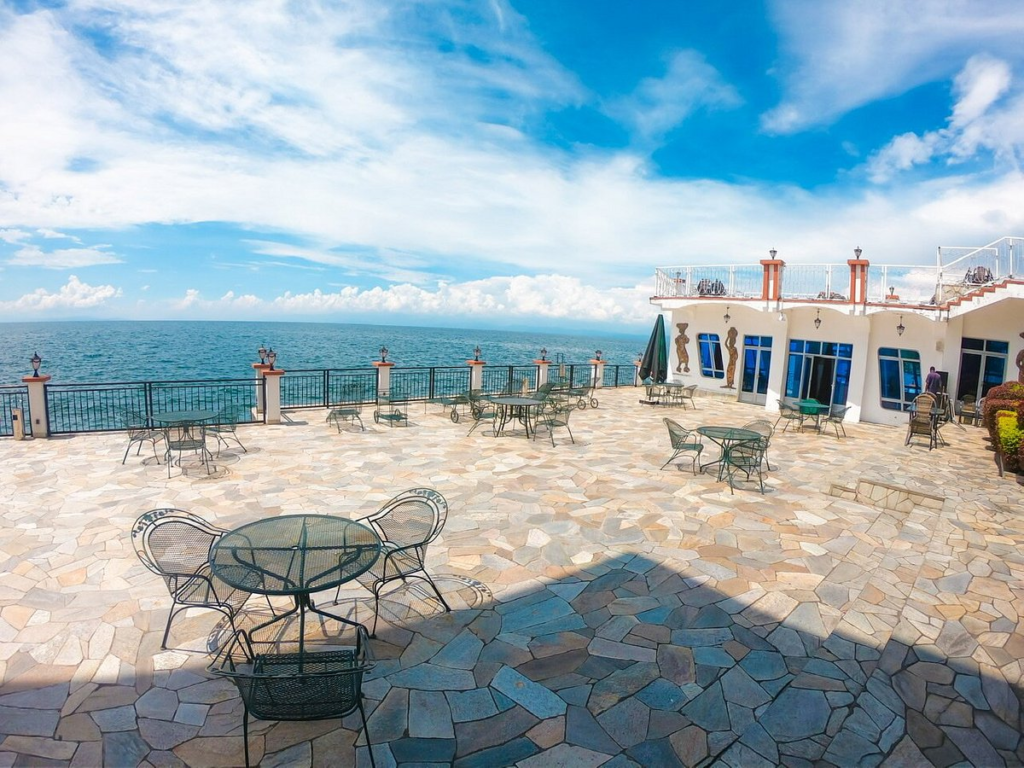
additional details to further enhance your knowledge about travel and tourism in the Democratic Republic of the Congo (DRC):
- Kahuzi-Biega National Park: Located in the eastern part of the country, Kahuzi-Biega National Park is another UNESCO World Heritage site. It is renowned for its population of eastern lowland gorillas, which are larger than their mountain gorilla counterparts. Visitors can participate in guided treks to observe these magnificent creatures in their natural habitat. The park is also home to other wildlife, including chimpanzees, forest elephants, and a variety of bird species.
- Cultural Heritage in Lubumbashi: Lubumbashi, the second-largest city in the DRC, offers a blend of history, culture, and urban charm. Explore the Lubumbashi Museum to learn about the region’s cultural heritage, including artifacts from ancient civilizations and traditional Congolese art. Visit the art galleries and craft markets to admire local artwork and purchase unique souvenirs. The city’s vibrant nightlife scene, with its live music venues and restaurants, provides an opportunity to experience Congolese entertainment and cuisine.
- Maiko National Park: Nestled in the eastern part of the DRC, Maiko National Park is renowned for its pristine rainforests, diverse wildlife, and dramatic landscapes. This vast protected area is home to several endangered species, including the elusive okapi, a rare forest-dwelling mammal. Explore the park’s dense vegetation on guided hikes, and keep an eye out for chimpanzees, monkeys, and various bird species. Maiko National Park offers a truly off-the-beaten-path adventure for nature lovers.
- River Cruises on the Congo River: Embark on a river cruise along the mighty Congo River, the second-longest river in Africa. Cruises typically depart from Kinshasa and journey through stunning landscapes, passing by remote villages and lush forests. Along the way, you can witness the daily life of the river communities, observe wildlife, and appreciate the breathtaking scenery. River cruises provide a unique perspective on the vastness and beauty of the DRC’s landscapes.
- Cultural Festivals: The DRC is known for its vibrant cultural festivals, which showcase the country’s rich traditions and diverse ethnic groups. The Yambi Festival, held in Kinshasa, celebrates Congolese music, dance, and fashion, attracting musicians and artists from across the country. The Fête de la Terre (Festival of the Earth) in Boma showcases the region’s cultural heritage through traditional dances, music performances, and art exhibitions. Attending these festivals offers a chance to engage with local communities and experience the vibrancy of Congolese culture.
- Volcanic Exploration: The DRC is home to numerous volcanoes, offering unique opportunities for adventure enthusiasts. Mount Nyiragongo, located in Virunga National Park, is one of the most active volcanoes in Africa. Hiking to the summit rewards you with the mesmerizing sight of a lava lake within its crater. Mount Nyamuragira, another active volcano, is known for its spectacular eruptions and can be visited with proper guidance and safety precautions.
The Democratic Republic of the Congo is a country of immense natural beauty, cultural richness, and extraordinary experiences. From wildlife encounters and volcanic expeditions to cultural festivals and urban explorations, the DRC offers a diverse range of attractions for intrepid travelers. However, it’s important to plan your visit carefully, stay informed about the current situation, and follow the guidance of local authorities and tour operators to ensure a safe and rewarding journey.
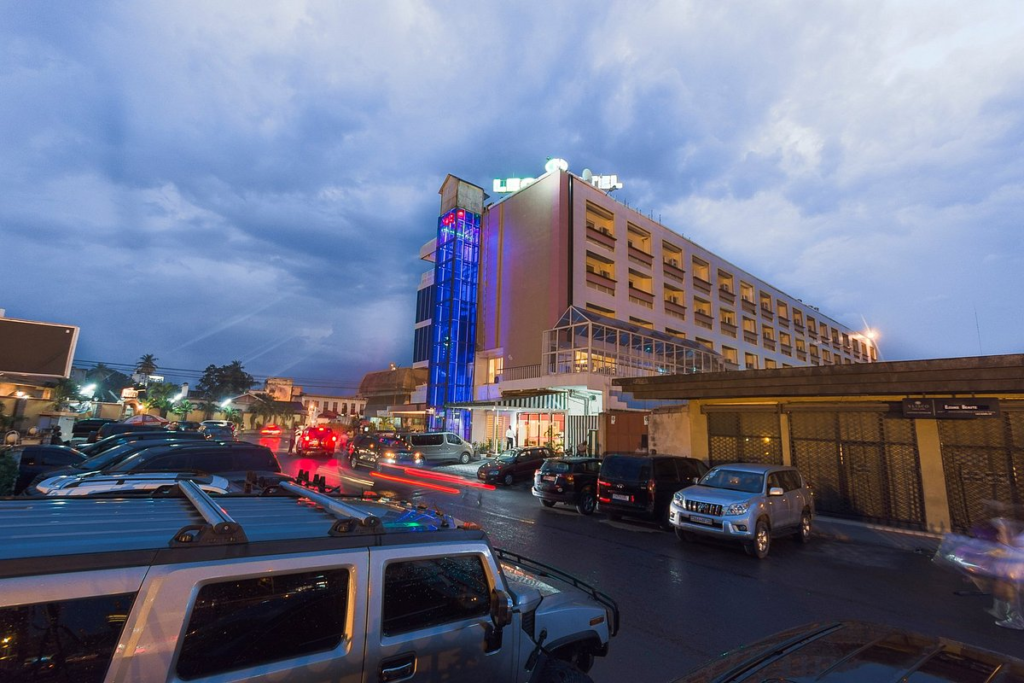
some more details about travel and tourism in the Democratic Republic of the Congo (DRC):
- Nyiragongo Lava Lake: Mount Nyiragongo, located in Virunga National Park, is famous for its active lava lake. The hike to the summit is challenging but rewarding. As you ascend, you’ll pass through different vegetation zones, including lush forests and volcanic rock formations. Once at the top, you can witness the mesmerizing sight of the bubbling lava lake, which creates a surreal and unforgettable experience.
- Cultural Diversity: The DRC is home to over 200 ethnic groups, each with its own distinct culture, traditions, and languages. Exploring local communities provides an opportunity to immerse yourself in the diverse cultural fabric of the country. Engage with the people, learn about their customs, taste traditional cuisine, and witness traditional ceremonies and dances. This cultural exchange offers a deeper understanding of the DRC’s rich heritage.
- Tchegera Island: Situated in Lake Kivu, Tchegera Island is a hidden gem for nature lovers. The island offers a tranquil retreat with its pristine sandy beaches and crystal-clear waters. Visitors can enjoy swimming, snorkeling, kayaking, and sunbathing in this idyllic setting. Overnight accommodations are available in eco-friendly tents, providing a unique camping experience with stunning views of the lake and surrounding landscapes.
- Wildlife and Nature Conservation: The DRC is committed to protecting its diverse wildlife and natural habitats. In addition to the gorillas and other primates, the country is home to unique species such as the bonobo, the Congolese peacock, and the Congo peafowl. Various conservation organizations and national parks work tirelessly to preserve these ecosystems and offer opportunities for eco-tourism, providing visitors with a chance to support conservation efforts.
- Water Sports in Lake Tanganyika: Lake Tanganyika, one of the largest lakes in the world, borders the DRC. It offers excellent opportunities for water sports enthusiasts. Snorkeling and diving in the lake reveal a stunning underwater world with an array of colorful fish species, including cichlids. You can also enjoy fishing trips, kayaking, and sailing on the lake’s calm waters, surrounded by picturesque landscapes.
- Mahale Mountains National Park: Although primarily located in Tanzania, a portion of Mahale Mountains National Park extends into the DRC. The park is known for its population of wild chimpanzees, offering a unique opportunity to observe these intelligent creatures in their natural habitat. Guided hikes through the dense forests of Mahale Mountains provide an immersive and unforgettable wildlife encounter.
- Local Cuisine: Indulge in the flavors of Congolese cuisine during your visit. Staples include fufu (a starchy dish made from cassava or plantains), saka-saka (a dish made from cassava leaves), and grilled fish from the rivers and lakes. Explore local markets to sample fresh fruits, vegetables, and spices. Don’t miss the chance to taste palm wine, a traditional alcoholic beverage made from the sap of palm trees.
As with any travel destination, it’s important to plan your trip well in advance, consider safety precautions, and stay informed about the current situation in the areas you plan to visit. Consulting with local tour operators and guides is recommended to ensure a smooth and enjoyable travel experience in the DRC.

some additional details about travel and tourism in the Democratic Republic of the Congo (DRC):
- Okapi Wildlife Reserve: Located in the northeastern part of the country, the Okapi Wildlife Reserve is a protected area known for its unique biodiversity. It is home to the elusive okapi, a rare forest-dwelling mammal that resembles a cross between a giraffe and a zebra. Explore the reserve’s dense rainforests on guided walks and spot other wildlife such as forest elephants, primates, and colorful bird species.
- Lualaba River and Lubumbashi Zoo: The Lualaba River, a major tributary of the Congo River, offers opportunities for river excursions and fishing trips. The river is surrounded by picturesque landscapes and provides a chance to observe local riverine communities. In Lubumbashi, the city’s zoo is a popular attraction, housing a diverse range of animals, including lions, zebras, crocodiles, and various bird species.
- Mangroves of the Congo Estuary: Explore the mangrove forests along the Congo Estuary, where the mighty Congo River meets the Atlantic Ocean. These unique ecosystems are teeming with biodiversity and are home to numerous bird species, marine life, and other wildlife. Take a boat tour to navigate through the intricate network of channels and witness the beauty of this ecologically significant area.
- Mount Stanley and Rwenzori Mountains: In the far eastern part of the DRC, Mount Stanley is the highest peak in the Rwenzori Mountains. This mountain range, also known as the “Mountains of the Moon,” offers challenging yet rewarding treks for experienced mountaineers. The Rwenzori Mountains are characterized by their breathtaking alpine scenery, glaciers, and diverse flora and fauna, including endemic plant species.
- Cultural Experiences in Goma: Goma, situated on the shores of Lake Kivu, provides a gateway to exploring the eastern part of the country. Engage with local communities, visit traditional villages, and learn about the customs and traditions of different ethnic groups. Goma is also known for its vibrant art scene, with numerous art galleries showcasing the works of Congolese artists.
- Music and Dance: The DRC is renowned for its vibrant music and dance culture. The country has produced globally acclaimed musicians, such as Papa Wemba and Koffi Olomide. In Kinshasa and other major cities, you can experience the energetic rhythms of Congolese music in lively bars, clubs, and music festivals. Dance forms like soukous and ndombolo are an integral part of the Congolese cultural identity.
- Volunteering and Community Projects: Many organizations in the DRC offer opportunities for travelers to engage in volunteer work and community projects. These initiatives focus on education, healthcare, wildlife conservation, and community development. Volunteering provides a chance to make a positive impact while gaining a deeper understanding of the local culture and challenges faced by the communities.
When planning your trip to the DRC, it is important to check travel advisories, keep up with the latest information about safety and security, and follow the guidance of local authorities. Additionally, respecting local customs, traditions, and the environment is essential to ensure a positive and responsible travel experience in the country.
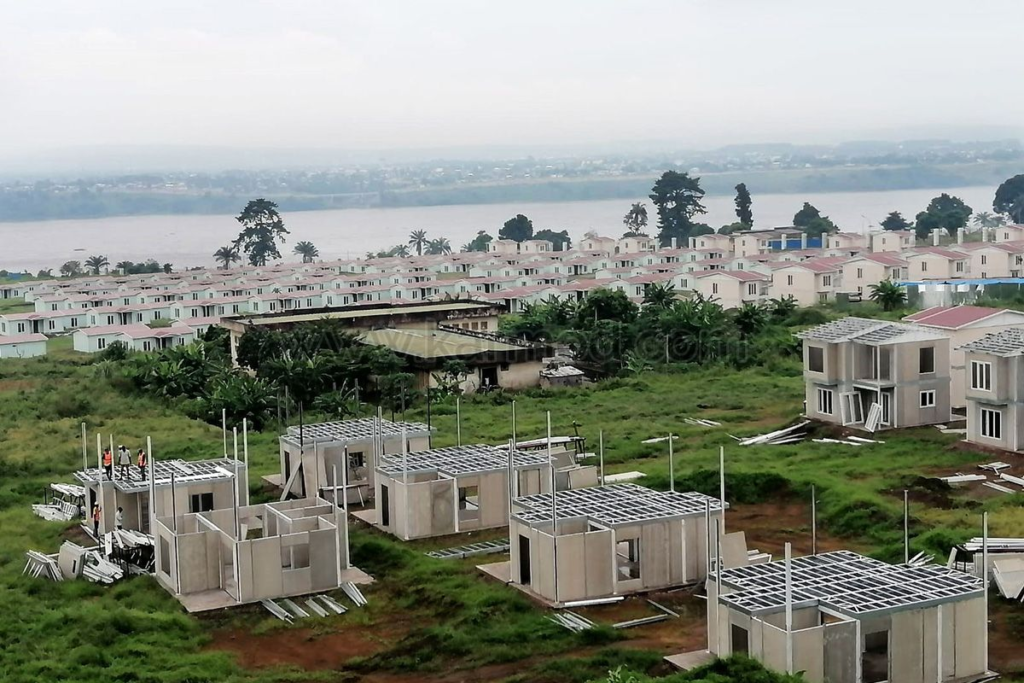
some more details about travel and tourism in the Democratic Republic of the Congo (DRC):
- Congo River Basin: The DRC is home to the vast Congo River Basin, one of the world’s most important and ecologically diverse regions. This expansive area encompasses tropical rainforests, wetlands, and rivers, and is known for its rich biodiversity. Exploring the Congo River Basin provides opportunities for wildlife spotting, birdwatching, and experiencing the incredible natural beauty of the region.
- Virunga National Park: Virunga National Park is a UNESCO World Heritage site and one of the oldest national parks in Africa. Located in the eastern part of the DRC, it is known for its diverse ecosystems, including volcanic mountains, dense forests, and savannahs. The park is home to the critically endangered mountain gorillas, as well as other wildlife such as chimpanzees, elephants, and hippos. Visitors can go on guided gorilla trekking expeditions, hike volcanoes, and enjoy game drives to witness the park’s incredible wildlife and landscapes.
- Traditional Art and Crafts: The DRC has a rich tradition of artistic expression. Traditional art and crafts play an important role in Congolese culture. Local artisans create intricate wood carvings, masks, sculptures, and textiles that reflect the country’s diverse ethnic groups and their cultural heritage. Exploring local markets and artisan workshops provides an opportunity to admire and purchase these unique handmade crafts as souvenirs.
- Waterfalls: The DRC is blessed with several breathtaking waterfalls. The Zongo Falls, located near Kisangani, is a series of cascades surrounded by lush greenery. The Boyoma Falls, also known as Stanley Falls, is a collection of seven waterfalls along the Lualaba River. These falls are a sight to behold and offer opportunities for photography, nature walks, and boat trips.
- Congo Basin Rainforest: The DRC is home to a significant portion of the Congo Basin Rainforest, the second-largest rainforest in the world. This lush and biodiverse ecosystem is teeming with wildlife, including various primate species, colorful birds, and numerous plant species. Guided forest walks and treks allow visitors to immerse themselves in this pristine environment and observe the unique flora and fauna.
- Historical Sites: The DRC has a rich history, and there are several historical sites worth exploring. The Livingstone Falls, a series of rapids and cascades along the Congo River, holds historical significance as an obstacle faced by early European explorers. The Palace of the Kabaka, located in Kisangani, is a colonial-era building that once served as the residence of the Belgian governor. These sites provide insights into the country’s past and its connections to the broader history of Africa.
- River Safaris and Fishing: The DRC’s rivers offer opportunities for river safaris and fishing adventures. Explore the waterways on boat trips, spotting wildlife along the riverbanks, and enjoying the serene beauty of the surrounding landscapes. Fishing enthusiasts can try their hand at catching various freshwater fish species, including catfish and tilapia, while enjoying the tranquility of the rivers.
Conclusion:
The Democratic Republic of the Congo beckons intrepid travelers with its remarkable landscapes, abundant wildlife, and captivating cultural heritage. From the vibrant streets of Kinshasa to the untouched wilderness of national parks, the DRC offers a journey of discovery and adventure. While challenges exist, the rewards of exploring this enigmatic country are boundless. With careful planning, a spirit of adventure, and respect for the local communities and environment, a trip to the DRC promises an unforgettable experience that will leave a lasting impression.

